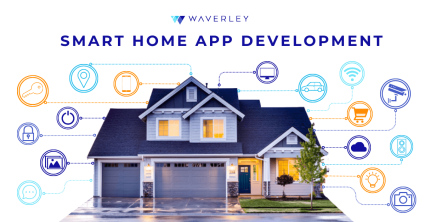Controlling Home Automation Systems Through Mobile Apps
Dec 15, 2024Learn how to control home automation systems easily through mobile apps for seamless management of your smart home.
Controlling Home Automation Systems Through Mobile Apps
This article explores the various ways mobile apps facilitate control over home automation systems, drawing information from several sources
Methods of Control
Home automation apps offer several methods for controlling your smart home:
1. Remote Control: The primary function of most home automation apps is remote control. This allows users to manage devices in real-time, regardless of their physical location. Examples include turning off lights, opening garage doors, or adjusting thermostats from anywhere with an internet connection. (Source: Security.org)
2. Voice Assistants: Many apps integrate with voice assistants like Amazon Alexa, Google Assistant, or Siri. This enables hands-free control through voice commands, such as "Alexa, turn on the living room lights." (Source: Security.org)
3. Schedules and Automation: Apps allow users to create schedules and automation routines. This means devices can be programmed to perform actions automatically based on time, location, or other triggers. For example, lights could turn on at sunset or the thermostat could adjust the temperature before you arrive home. (Source: HighSpeedInternet.com, Unified Infotech)
4. Scenes: Some apps allow the creation of "scenes," which group multiple devices together to perform coordinated actions with a single tap. A "goodnight" scene might dim the lights, lock the doors, and set the thermostat to a lower temperature. (Source: Unified Infotech, Waverley Software)
5. Geofencing: Advanced apps utilize geofencing, which triggers actions based on your location. For instance, the lights could turn on automatically when you approach your home. (Source: Security.org)
6. Home and Away Modes: These modes automate settings based on whether you're home or away. "Away" mode might turn off lights and adjust the thermostat to save energy, while "Home" mode could optimize comfort settings. (Source: Security.org)
7. Multi-Device Compatibility: Many apps support a wide range of devices from different manufacturers, allowing centralized control of your entire smart home ecosystem. (Source: HighSpeedInternet.com, ProCoders)
8. Alternative Interfaces: Some systems, like Amazon Alexa, offer alternative control methods beyond voice commands, providing options for users who prefer a visual interface or have accessibility needs. (Source: Unified Infotech)
App Examples
Several articles highlight specific apps that provide these control methods:
- Amazon Alexa: Offers voice control, a sophisticated interface, and broad device compatibility, including support for the Matter protocol. (Source: HighSpeedInternet.com, Unified Infotech)
- SmartThings: Provides broad compatibility with many brands and a user-friendly interface. (Source: HighSpeedInternet.com, Unified Infotech)
- Google Home: Seamlessly integrates with Nest devices and offers easy setup for automations. (Source: HighSpeedInternet.com, Unified Infotech, Waverley Software)
- Apple Home: Specifically designed for Apple devices and HomeKit accessories, offering Siri integration. (Source: HighSpeedInternet.com, Unified Infotech)
- IFTTT: Allows users to create custom automation routines ("applets") connecting devices from various brands, even without a central hub. (Source: HighSpeedInternet.com, Unified Infotech, Security.org)
- Samsung SmartThings: Allows users to manage connected devices easily and automate actions with various triggers. (Source: ProCoders)
- Philips Hue: Specifically designed for Philips Hue lighting products, offering color and brightness adjustments, scheduling, and routines. (Source: ProCoders, Unified Infotech, Waverley Software)
- Home Assistant: An open-source platform that doesn't require a hub, offering responsive controls and customization options. (Source: HighSpeedInternet.com)


New Smart Home Security Seal
Published Jan 22, 2025
The U.S. government introduces a new smart home security seal, the U.S. Cyber Trust Mark, to help consumers identify devices meeting robust cybersecurity standards. This label will appear on various internet-connected devices, providing a visible indication of device security....
DEEBOT T20 Review: The Future of Automated Home Cleaning
Published Jan 22, 2025
The DEEBOT T20 is a revolutionary robot vacuum with advanced mopping, hot water cleaning, and auto-lifting mop pads. Experience the future of home cleaning with its powerful suction and smart navigation....
The Future of Smart Homes with Apple Intelligence
Published Jan 21, 2025
Explore the future of smart homes with Apple Intelligence, homeOS, and new devices. Discover how Apple is transforming connected living with AI-powered experiences....